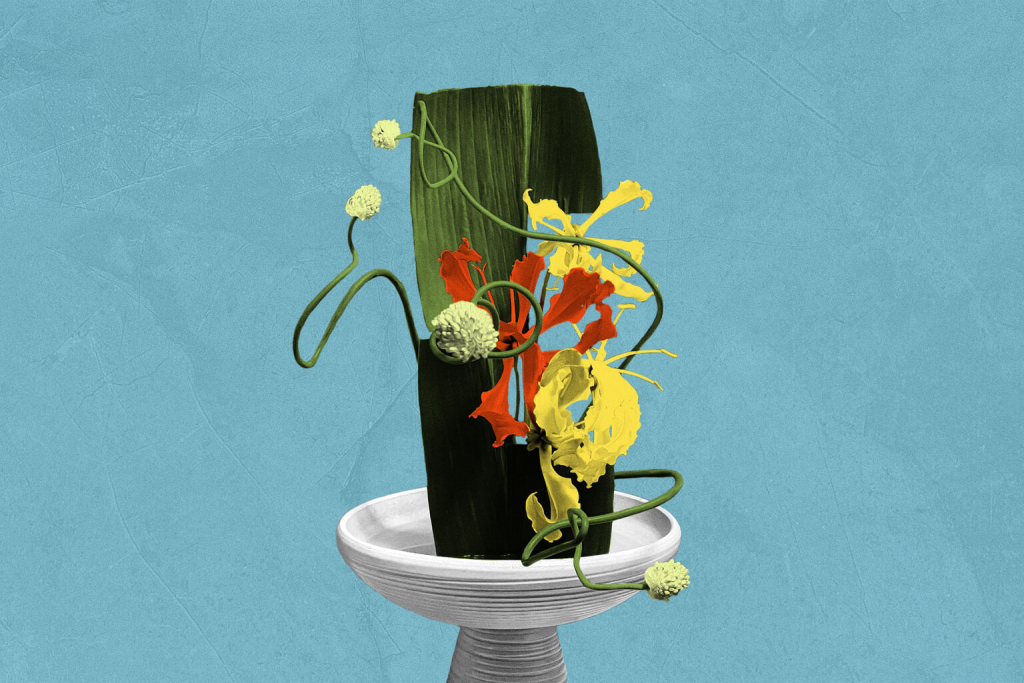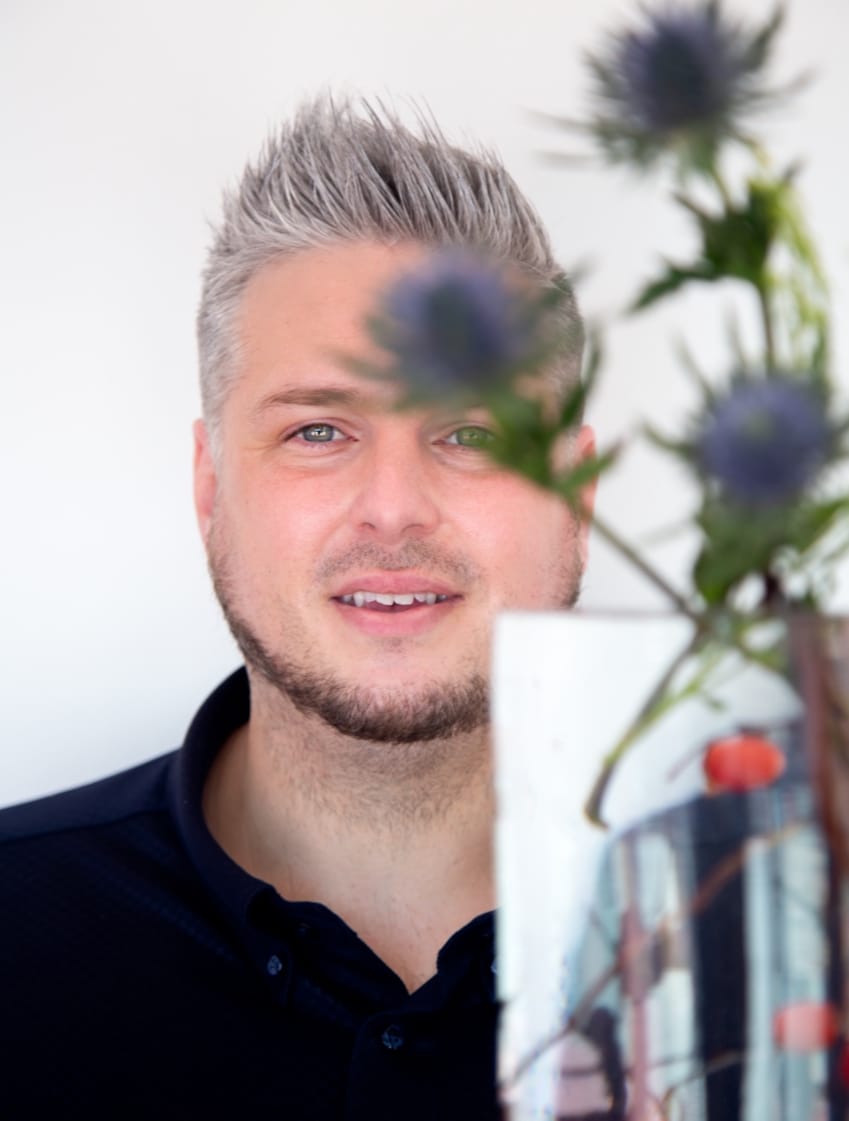For the past 17 years, Daniel Patterson has enjoyed a quiet life in Japan. Hailing from the east coast of Canada, he initially split his time between teaching, taking care of his dog, baking and playing the harp. However, seven years ago, he added another activity to his list: ikebana. Since then, Patterson’s hard work has taken him further than expected — he became an ikebana teacher in Japan. Tokyo Weekender recently sat down with him to learn more about “making flowers come alive” (the literal meaning of “ikebana”).
1. What brought you to Japan?
After middle school, a friend wanted to join a karate dojo but needed moral support, so I joined it with him. A few months later, a Japanese woman joined the dojo. She came to Canada to learn English and attend university. We quickly became friends and she encouraged me to move to Japan. I finally did in 2006. She remains in Canada teaching Japanese and I’ve stayed in Japan where I now teach ikebana.
2. How did you get into ikebana?
All my life I’ve been surrounded by plants, flowers and gardens. I always loved them. While living in Japan I’d seen many ikebana arrangements. I always admired them but would think to myself that I’d never be able to make something like that. Growing up I was absolutely terrible at the traditional mediums of art and I only just passed art classes, so I told myself I had no artistic talent.
One day at my train station I saw a small exhibition and reflected on how all the great things that have happened in the past happened when I stepped outside of my comfort zone and took a risk. Without knowing anything about ikebana I googled “English ikebana Yokohama” and the rest is history.
3. Can you tell us about the Sogetsu school of ikebana?
At just under 100 years old, Sogetsu is a much younger and more modern school of ikebana. Instead of following traditional and established forms, the founder of the school believed ikebana could be done by anyone, anywhere, anytime and using any material. It isn’t about creating a perfect arrangement, it’s about expressing your essence and the times we live in.
4. Has being a foreigner ever gotten in the way of your ikebana pursuits?
To the best of my knowledge, being a foreigner hasn’t led to others taking me less seriously. Sogetsu ikebana unexpectedly became popular all over the world with chapters in a wide variety of countries. This hails back to the philosophy about anyone making ikebana. Your arrangements speak for your work, not where you come from.
5. Take us through your process of creating an ikebana arrangement.
At home, after choosing a vase and whatever flowers I have on hand, I just let my mind go free while listening to music or watching TV and see what ends up happening.
When taking classes, you will either be presented with flowers and a vase, or you get to select both. You need to sit down, feel and examine the materials, see if they are bendable or rigid, look at color combinations, etc. Then you either draw out your plan or make it in your head. While making the arrangement, you need to be open to the ever-changing possibilities that come to mind and make adjustments from the original plan.
6. What arrangement you’ve made holds a special meaning to you?
I know it’s a cliché, but the first arrangement I ever made. While far from being impressive, it holds the most meaning to me. As I mentioned before, while going through school I did horribly in art classes and graphic design and was told I was hopeless.
When making my first arrangement I could feel a part of me awaken that I didn’t know was missing. My hands touching the branches and arranging, there was a part within that re-connected to my whole self.
7. What does it take to become good at ikebana?
It takes a desire to work with flowers and plants and being open to learning all of the rules and principles while reflecting upon yourself and how you express your feelings and essence through your arrangements. It also takes persistence and continuous practice to train your eye for many factors, most importantly space, line and color.
8. What are some misconceptions people have about ikebana?
I believe people have a lot of the same misconceptions I had before I started ikebana —
that it’s a room full of elderly ladies making flower arrangements. People of all ages and paths make ikebana.
People also believe that it’s a relaxing hobby. While it can be relaxing, it takes focus, effort, mindfulness and practice. It’s more than a bouquet of flowers; it’s a reflection of the times we live in.
9. Has your work ever been exhibited?
I’ve had my work displayed in small art exhibitions in the past as part of my training. My biggest display was at the 100th anniversary exhibition of Sogetsu ikebana at Takashimaya Nihombashi in March 2019. I was looking forward to exhibiting more around Tokyo and Yokohama, however, Covid-19 happened and derailed all of those plans. Now that I’ve had my booster shot, I’m contemplating making arrangements for shops and restaurants.
10. What’s the ultimate goal of ikebana?
It’s about living through flowers and imbuing and expressing yourself in your arrangements — either for yourself in your own environment or out in the public. Bringing flowers and nature into our increasingly inorganic environments and reflecting our modern lives.
Follow Daniel Patterson on Instagram













